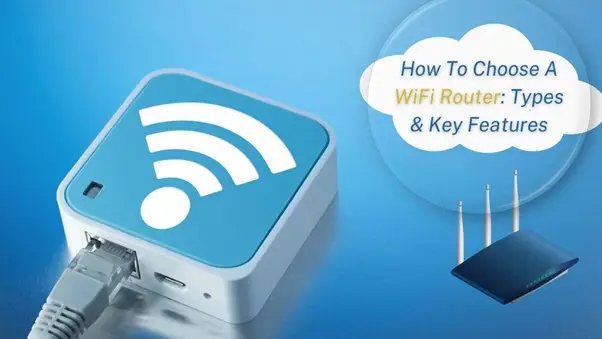Are you putting up a new home office and require a dependable internet connection? Understanding routers is vital for a pleasant internet experience. A good router not only provides fast and reliable internet access but also offers other advantages. These include increased connections for many devices, greater security measures, and improved overall network speed. In contrast, a poor network can provide unpleasant interruptions, sluggish speeds, and connection problems.
In today’s market, there are many super routers, like Teltonika 5G routers and others, making it normal for people to feel overwhelmed with choices. You will get to know a complete picture of WiFi routers in this article, from how they work to how to choose them.
What is a Wi-Fi Router?
A Wi-Fi router is a device that performs the functions of a router and a wireless access point. Routers provide access to the internet or a private computer network. You can connect multiple devices in a network with a router. The wireless feature allows devices to connect to the network without the use of physical cables, resulting in more convenient and flexible connectivity.
Different Types of Routers
Here are two main types of routers:
- Traditional Stand-Alone Routers: These are single devices that provide wireless connectivity to devices within a limited range. You should use these routers if you want a router for personal use and for a smaller space.
- Mesh Wi-Fi Systems: these routers consist of multiple devices that work together to create a seamless Wi-Fi network. Because of this, they have extended coverage. Mesh systems are ideal for larger homes or areas with connectivity challenges.
Key Features of Wireless Routers
Let’s take a look at the key features of wireless routers:
- Wireless Standards: The most recent standards, such as WiFi 6 or WiFi 6E, provide quicker speeds and greater performance. You can even connect numerous devices at once.
- Dual-Band or Tri-Band: Dual-band routers use both 2.4GHz and 5GHz frequencies, whereas tri-band routers add an extra 5GHz band for reduced interference and greater performance in congested networks.
- MU-MIMO Technology: Multi-user, several Inputs, Multiple Output technology enables routers to connect with several devices at the same time.
- Quality of Service (QoS): QoS features prioritize specific types of traffic, resulting in a smoother performance for activities like gaming and video streaming.
- Advance Security Features: Look for routers with strong security features such as WPA3 encryption, guest network compatibility, and built-in firewalls to safeguard your network from cyber-attacks.
5 Things to Consider Before Buying a Wireless Router
- Router Type: Traditional vs. Mesh WiFi Systems
When selecting a wireless router, your first task is to determine whether you want a traditional stand-alone router or a mesh WiFi system. Mesh systems are known for their superior coverage and reliable connections.
Thus, you should benefit from such routers if you have a larger home. These routers could also help you provide network coverage if you reside in dead zone areas where traditional routers may struggle to cover them consistently.
Some people prefer routers that offer both. These routers are flexible. For example, routers like the Teltonika RUT200 offer both mesh and traditional WiFi styles, providing flexibility for users who want versatile connectivity options tailored to their specific needs.
- WiFi Standards: Latest Technology for Faster Speeds
Check the wireless standards supported by the router, with a focus on WiFi 6 or WiFi 6E for optimal performance. These standards offer faster speeds and improved efficiency. This could be beneficial if you have multiple devices connected simultaneously, and it offers a seamless and lag-free experience for all connected devices.
- Ethernet Ports: Wired Connectivity for Stability
Ensure the router has an adequate number of LAN ports for wired connections to devices like computers, smart TVs, and gaming consoles. Multiple LAN ports with high bandwidth capacity provide stable and fast connections for wired devices, reducing lag and ensuring a reliable network experience.
- ISP Compatibility: Seamless Integration with Your Provider
Before purchasing a router, verify its compatibility with your Internet Service Provider (ISP). Some ISPs offer compatible routers. Choosing a router that aligns with your ISP’s specifications can prevent future connectivity issues and ensure seamless integration into your existing network setup.
- Coverage and Placement: Maximizing Signal Strength
When assessing router coverage, you would also need to consider the size of your home and potential WiFi dead zones. Mesh WiFi systems have become ideal for larger homes, as discussed earlier, or areas with signal challenges. That’s because they offer superior coverage and eliminate dead spots.
Additionally, for improved signal strength and overall coverage throughout your home, strategically place your router centrally and ensure it is unobstructed.
Summary
Choosing the appropriate WiFi router is critical for a smooth online experience. Understanding kinds and major characteristics is critical when working with Teltonika 5G routers and mesh networks. WiFi standards for higher speeds, Ethernet connectors for reliable connections, ISP compatibility, and ideal coverage and location are all important factors to consider. Traditional routers are best suited to smaller places, but mesh systems work well in bigger residences or areas with dead zones. A flexible solution, such as the Teltonika RUT200, accommodates both forms, offering flexibility for a variety of connectivity requirements.


